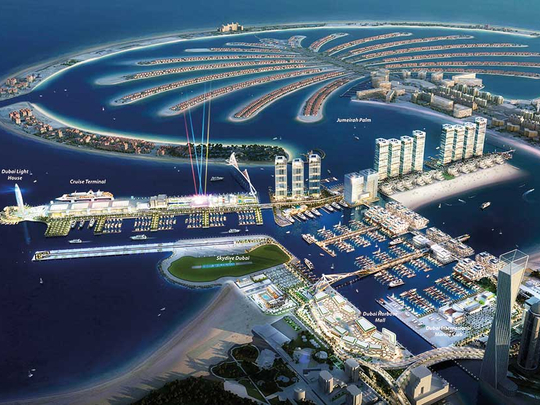
Dubai: Owners of villas on the Palm and at Emirates Hills have every reason to feel a bit of seasonal cheer. Prices of their high-value properties are starting to once again inch back or staying flat. Either way, it is quite a relief from the steady erosion in values in recent times.
For instance, Palm villas are now “only” 3.9 per cent off from their 2014 peak, according to ValuStrat, while those at Emirates Hills are now 10.7 per cent from where they were in mid-2014.
In fact, the Palm villas have “fared much better and appreciated more than 2 per cent mid-2017 and are now flat,” said Declan King, Managing Director & Group Head for Real Estate at ValuStrat. “The Palm apartments are now 19.6 per cent below their peak, but did see tiny gains middle of last year and remained relatively stable last quarter [first quarter of 2018].”
In fact, high-end communities in Dubai might be clawing back some of their lost sheen — in value terms. Or seeing the rate of decline itself dip significantly. The Burj Khalifa, for instance is 12.3 per cent below its mid-2014 high, but saw only a 0.2 per cent drop in the first three months of 2018. That was after no changes were recorded in the fourth quarter of 2017.
“At Dubai Marina, capital values are still 16.6 per cent below their peak, but in the last six months have seen only 0.2 per cent dips, while the Downtown is 21.3 per cent from the peak and lost only 1.3 per cent in Q1-18,” said King.
ValuStrat notes that “it is interesting that we found these (prime property) to be more resilient with marginal declines of less than 1 per cent recorded in capital values for premium locations such as Emirates Hills, Palm Jumeirah, Dubai Marina and Burj Khalifa”.
But the reason to cheer is not apparent across Dubai’s residential neighbourhoods. The flood of new launches last year in mid-tier communities have ensured there is less flexibility for prices to remain stable or, in a best-case scenario, inch higher.
Available data
ValuStrat reckons that a whopping 40,000 new homes are in line for possible completion this year. That is by far well above what developers have managed to hand over in recent years. averaging under 15,000 units.
So, is 40,000 plus new additions a doable? “Based on our research from recently available data from developers, we have 35,000 apartments and 10,000 villas scheduled for completion this year, some from projects originally scheduled to be handed over in the past two years,” said Haider Tuaima, Head of Research at ValuStrat. “These latest figures may be subjected to significant downward adjustments.
“It will be interesting to see how many of the announced projects will handover on time this year. Given Dubai’s population growth rate of 7 per cent over the last five years, the city, on a macro level, will continue to be undersupplied.” (Incidentally, ValuStrat reckons 2017 completions to be around 22,000 units, which is way above the estimates put out by other real estate consultancies in town.)
Factbox: Dubai’s freehold locations still caught in the value slide
* Investors in some of Dubai’s freehold clusters wouldn’t mind seeing a bit of price stability for their properties. But so far, they have been disappointed. The first quarter saw International City units take a 6 per cent hit, while at Production City it was by 5 per cent. Those in Arabian Ranches felt a 5 per cent year-on-year price pressure, and it was 3.6 per cent for the Meadows, according to ValuStrat. “The prominence of new build supply in the wider Dubai market continues to be a contributing factor to broader price declines” said Declan King
* Secondary market activity — especially related to ready property — did pick up slightly in Q1-18 after a subdued 2017. But emerging locations such as MBR (Mohammad Bin Rashid) City and Dubai South are yet to see sufficient activity in the buying and selling of pre-owned units. Off-plan remains the dominant force there.
* In the rental space, asking rates were down 7 per cent for apartments and 3 per cent for villas at the end of the first quarter from a year ago levels.











